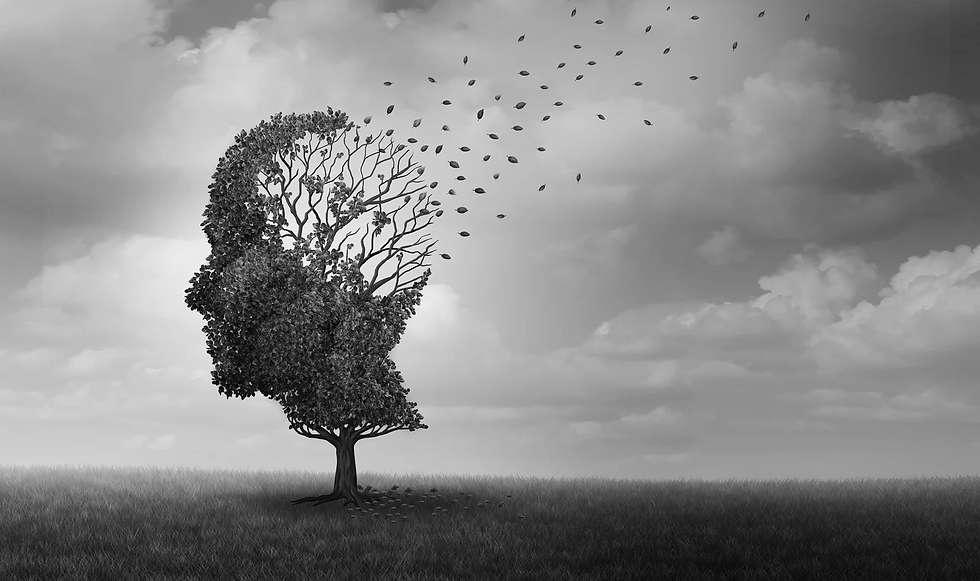How to Get Your Prescription Drugs During a Disaster
- Rachel Nania, AARP
- May 12
- 4 min read

Wildfires, tornados, hurricanes, floods and other natural disasters displace millions of Americans each year, and in many instances, people are forced to flee quickly and often without basic necessities, including prescription medications.
For the 9 in 10 older Americans who take a prescription drug, not having access to essential pills and injectables can have dire health consequences. Thankfully, “there are a number of things you can do to get your medications replaced,” when disaster strikes, says Danielle DiBari, chief pharmacy officer at NYC Health + Hospitals. Here are some steps you can take.
If you use a local pharmacy: Contact your pharmacy as soon as possible and ask them to transfer your prescription to another pharmacy in your current location.
If your pharmacy is closed because of the emergency, your insurance provider can help you locate an in-network pharmacy in your area, DiBari says. The website RxOpen also tracks pharmacies that are open during emergencies.
The new pharmacy should be able to verify your medications by checking with your insurance company. Another option is to call your health care provider and see if they can call in your prescriptions to a new pharmacy in your area.
If you use a chain pharmacy: “You can actually go to any other location of that chain pharmacy, and they can look up your prescription drug history, find what you're on and fill it in an emergency situation,” says Sarah Stephens, pharmacy initiatives manager at Cedars-Sinai.
In many cases, a pharmacist can fill your prescription during a federal, state or local emergency, even if you’re not due for a refill. If your medication is a controlled substance, however, the pharmacist may need to work with your insurance provider to confirm the drug is on your medication list, Stephens says.
One tip: If you don’t have access to an in-network pharmacy and need to fill your medication at one that is out of network where you’re more likely to face higher costs, be sure to save your receipts so you can ask your plan if they will refund you, the Centers for Medicare & Medicaid Services recommends.
For individuals without insurance, the Emergency Prescription Assistance Program (EPAP) provides free emergency medication refills during federally declared disasters. You can call the program’s hotline at (855) 793-7470 to find out if you’re eligible.
Consider extra supplies
If your medication is sensitive to temperatures — maybe it needs to be refrigerated — ask the pharmacist for advice on what to do. The pharmacy may have a spare cooler, for example. Hotels and shelters may also have refrigeration facilities for displaced individuals to use.
In some instances, your medication may be fine at room temperature for a few days, and the pharmacist can help you determine if that’s the case, Stephens says. Insulin, for example, can go without refrigeration and kept at a temperature between 59°F and 86°F for as long as 28 days, the Food and Drug Administration says.
“If you need needles or syringes or other supplies necessary for medication administration, [the pharmacist] can help with those things as well,” Stephens adds.
Preparing for a disaster
Being prepared for the worst can make it much easier to access your medications if disaster does strike, Stephens and DiBari stress. Here’s how you can plan ahead:
Keep a medication list on you — and keep it up to date. The list should include the name, dosage, prescribing doctor and pharmacy contacts for all the medications you take, DiBari says. “Once you have the information on the card, take a picture of the list and share it with a family member or trusted friend,” she adds. And be sure to keep a copy with you at all times. This can help your pharmacist get you the right meds during an emergency; it can also help health care providers if you are ever sent to the hospital in an emergency, Stephens says.
Know about your Rx emergency policies ahead of time. Contact your prescription benefits plan to ask about their refill, delivery and timeline policies in the event of an emergency, as well as any disaster assistance programs, DiBari says.
Pack a “go bag.” Having a bag of essentials ready to go in case of an emergency is key, public health experts say. In addition to packing essentials like clothing, food, water and more, pack your medication list, and if possible, your prescription medications. “If you are fortunate enough to have a warning about an impending disaster, keep several days’ supply of medication and supplies in your go bag,” DiBari says. “Along the same vein, you can keep all of your medication bottles and other supplies in one accessible location in a sealed and labeled waterproof bag. This makes them easy to take with you and prevents exposure to the elements and other potential contamination.” Find more information on what to include in your go bag on AARP.org.
Talk to your doctor or pharmacist about getting advance refills — especially during active weather seasons in your area, DiBari says. “Some pharmacies and plans also offer mail-order services and long-term supplies of medication, which could prove helpful in an emergency,” she adds.
If possible, fill all your prescriptions at the same pharmacy. If you find yourself without your medications due to an emergency, “this will reduce the number of places you need to contact to get your replacement medications,” DiBari says.
Sign up for emergency alerts on your phone. “In addition to weather apps, some pharmacies and health care providers offer text alerts for emergencies,” DiBari says.








